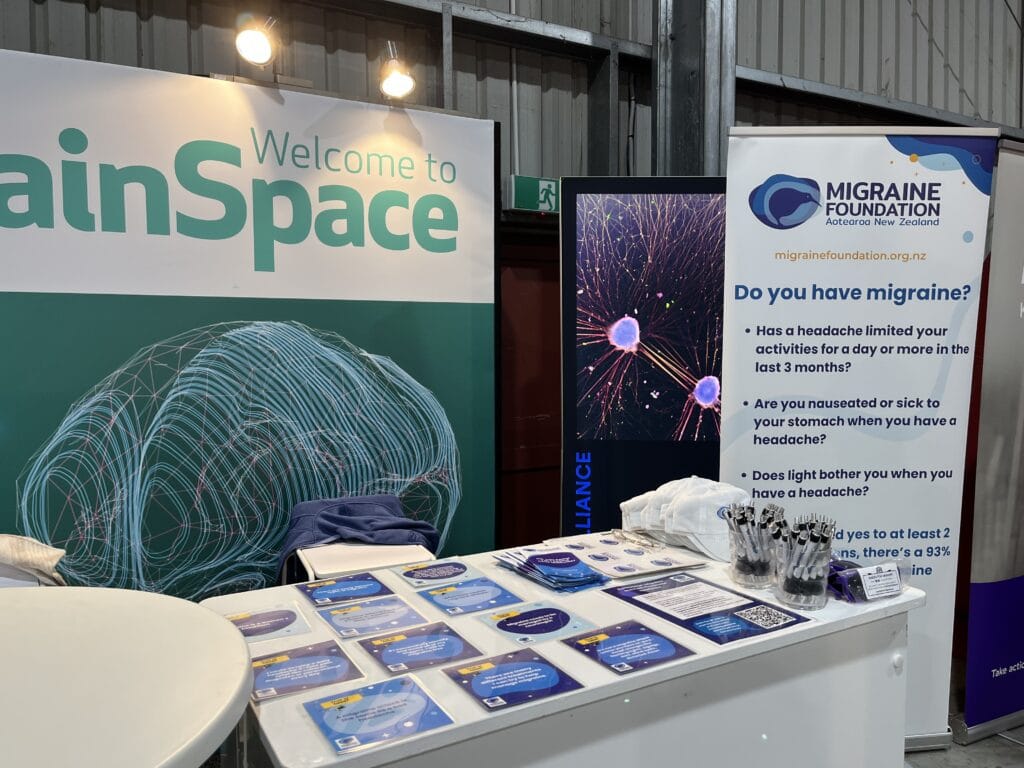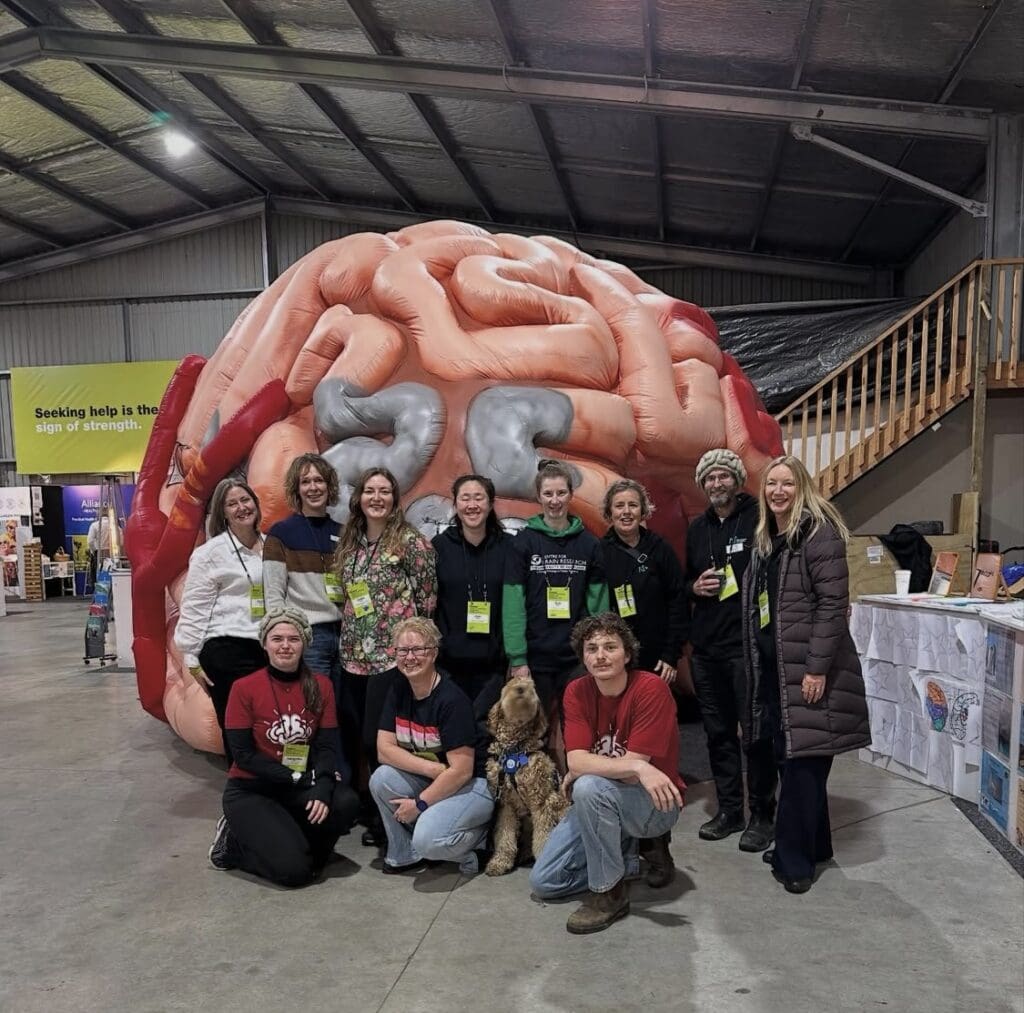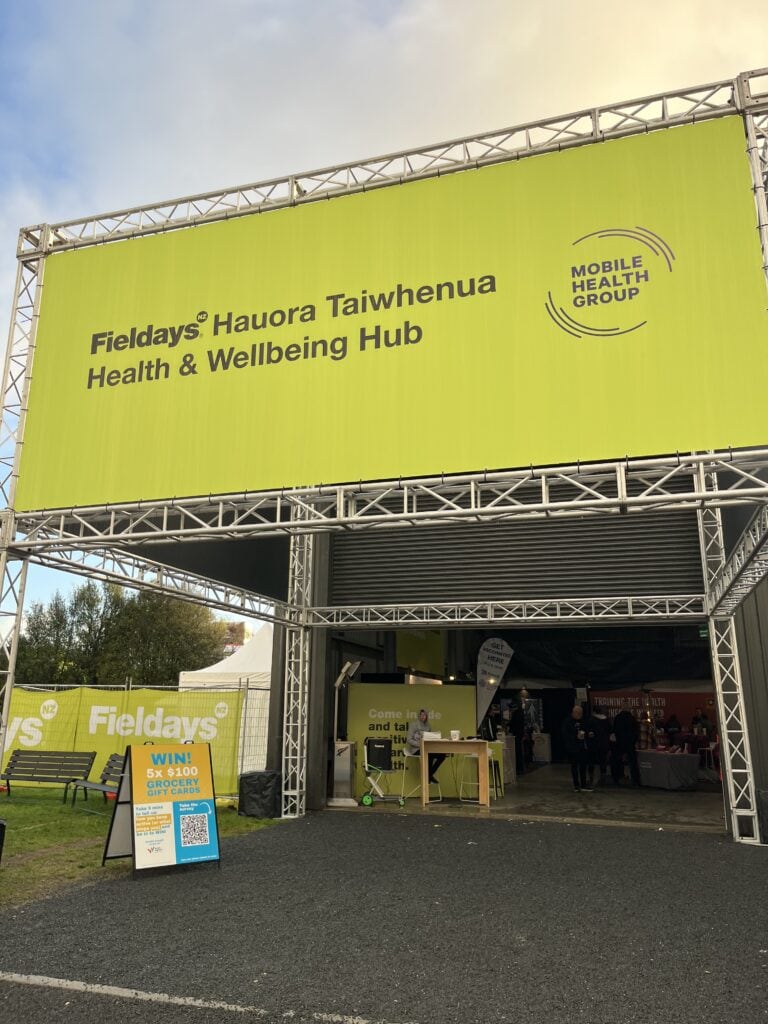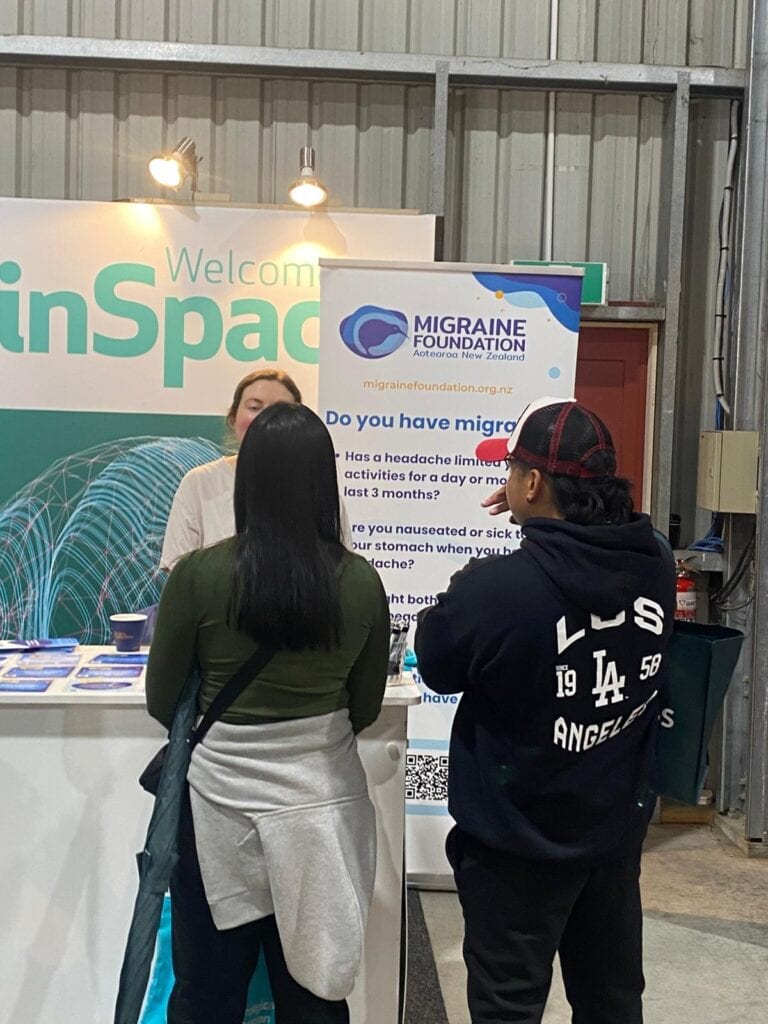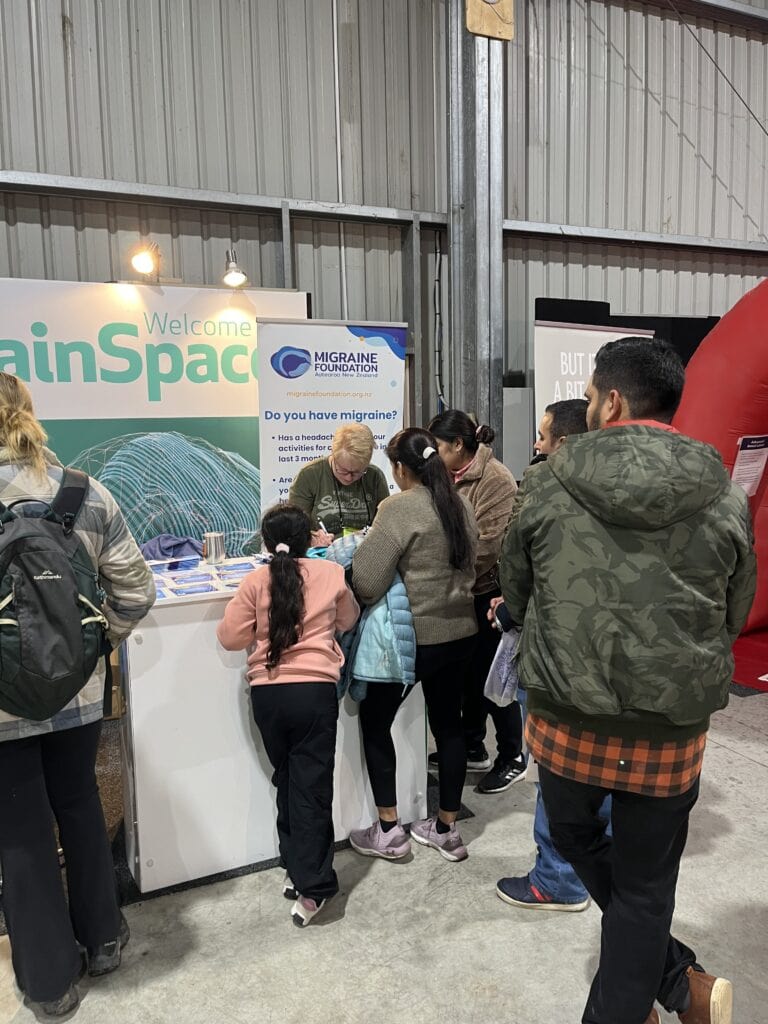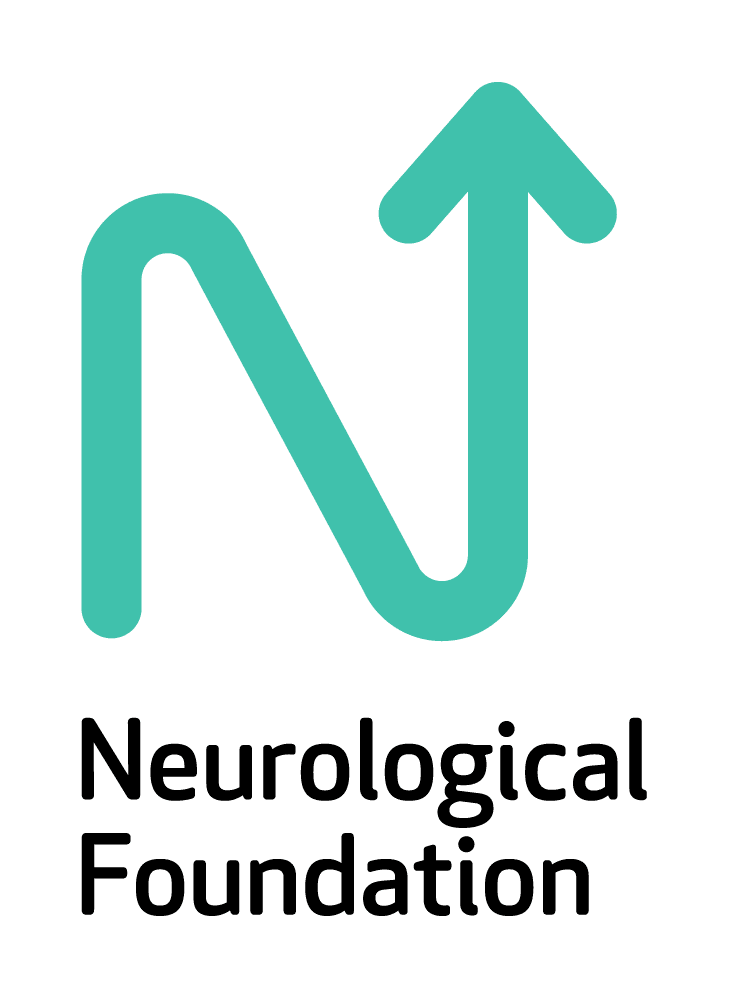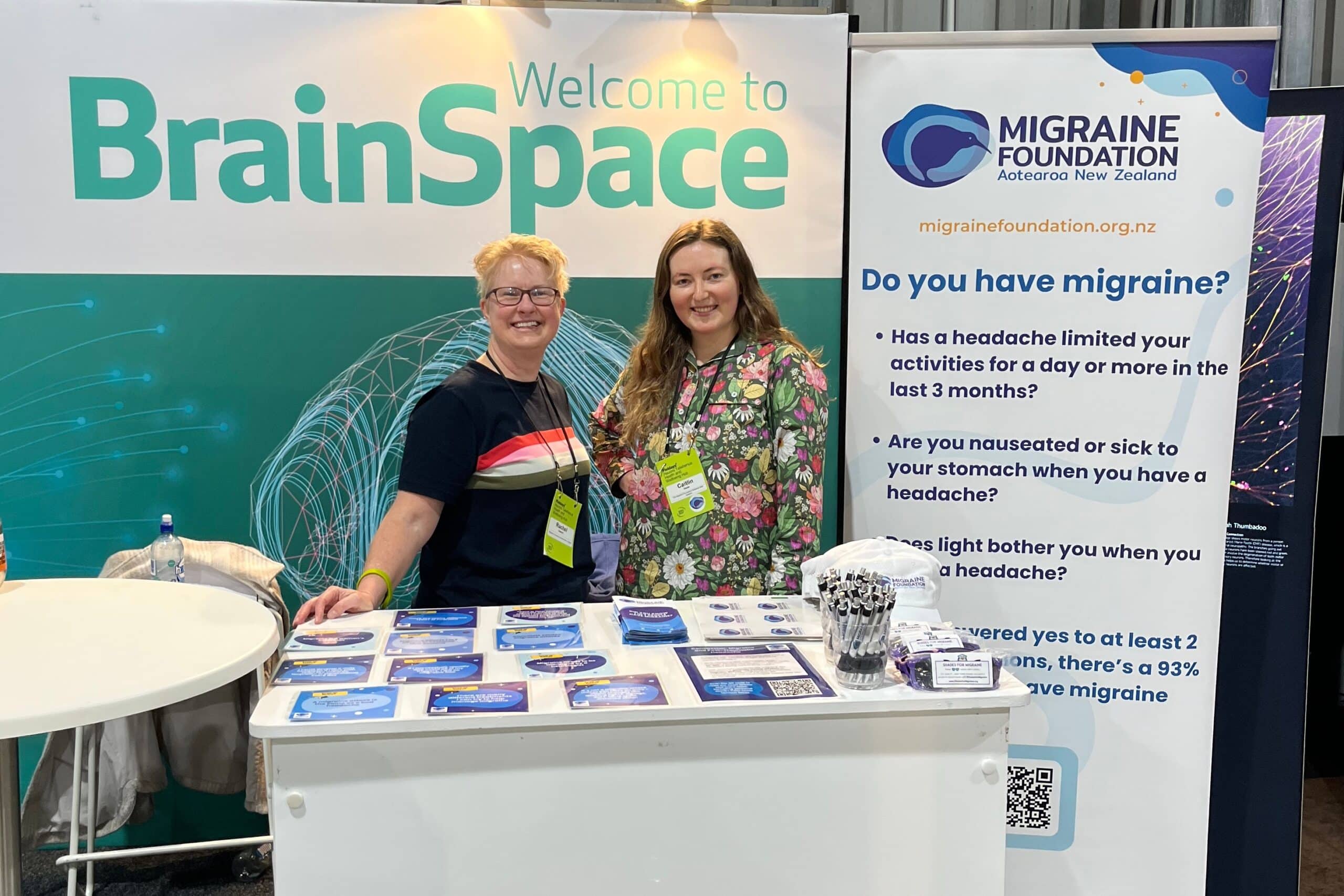June was a busy month for Migraine Foundation Aotearoa New Zealand, having attended our first General Practice Conference & Medical Exhibition (GPCME), and then making our debut at Fieldays the following weekend.
Fieldays is the largest agricultural event in the Southern Hemisphere, held annually at Mystery Creek, Waikato. More than 110,000 visitors were in attendance at Fieldays 2025, surpassing last year’s numbers.
As well as championing the rural lifestyle and showcasing the latest agricultural advancements, there’s a real focus on community and education. Two of our volunteers, Rachel and Caitlin (pictured above), staffed the Migraine Foundation education stand in the Hauora Taiwhenua Health & Wellbeing Hub on 13 and 14 June, located in the BrainSpace – a collaboration between the Neurological Foundation, The University of Auckland’s Centre for Brain Research and the University of Otago’s Brain Health Research Centre.
Concussion was a running theme in the BrainSpace section of the hub, and our stall was next to the team from Headway and alongside some incredible neurological researchers.
The Hauora Taiwhenua Health & Wellbeing Hub was a lively and busy site at Fieldays, and an impactful opportunity to meet with the migraine community that came to see us. Thank you to everyone who stopped by and shared your stories with us, and for playing our mythbusting game.
A key takeaway from Fieldays for our team is that knowledge around best practice care for managing migraine disease is quite varied. We’re passionate about empowering those of us living with migraine in Aotearoa by sharing information that increases health literacy and the impact of your self-advocacy.
Some of the recurring themes among our conversations included sharing that:
- there’s a new class of preventive medications available in Aotearoa – the anti-CGRP medications
- you don’t need a specialist to prescribe CGRP medications
- opioids aren’t appropriate pain relief for a chronic condition like migraine, with the risk of dependency one of the potential consequences
- anti-nausea medications can help you absorb medications better when treating an acute attack
- there are different options for medication and non-medication interventions, and if something isn’t working this doesn’t mean the other options won’t help. It’s worth moving on and trying another.
We also found that many people had heard of the rizatriptan wafer and the sumatriptan oral tablet, but more people than we anticipated didn’t know you can get sumatriptan in an injectable form on prescription from your GP that you pick up from the pharmacy and self-administer at home to help relieve an acute migraine attack.
It was great to have our pens, hats and information packs at the stand and we couldn’t have made this happen without your generous support.
We’ll keep focussed on sharing the latest knowledge of migraine disease with primary care health professionals, as well as connecting with our community in person.
Huge thank you to the Neurological Foundation for helping us to attend and providing us with space to connect with the migraine community.
